Golden Triangle with Orchha, Khajuraho & Varanasi
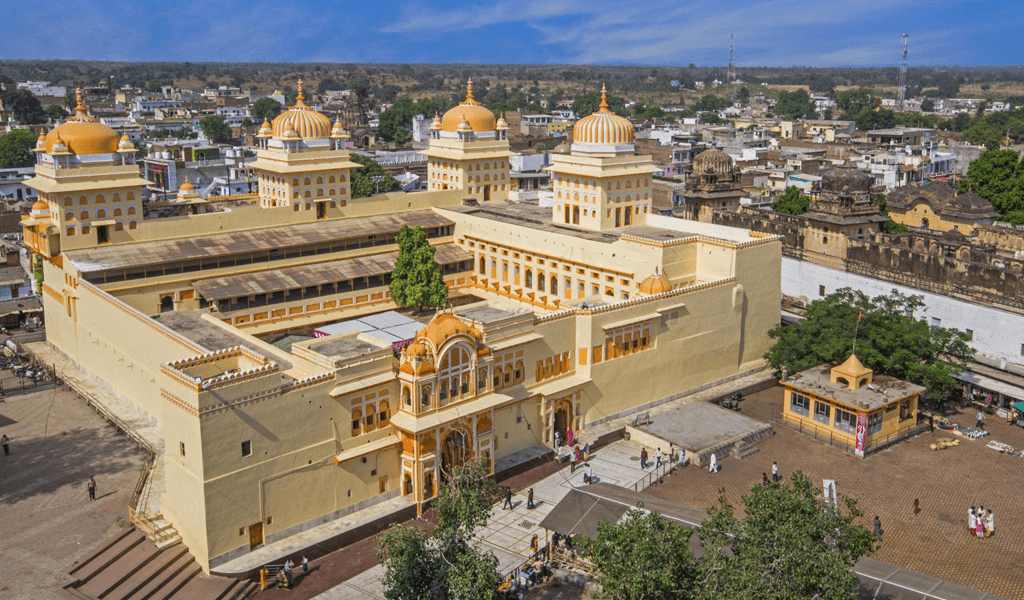
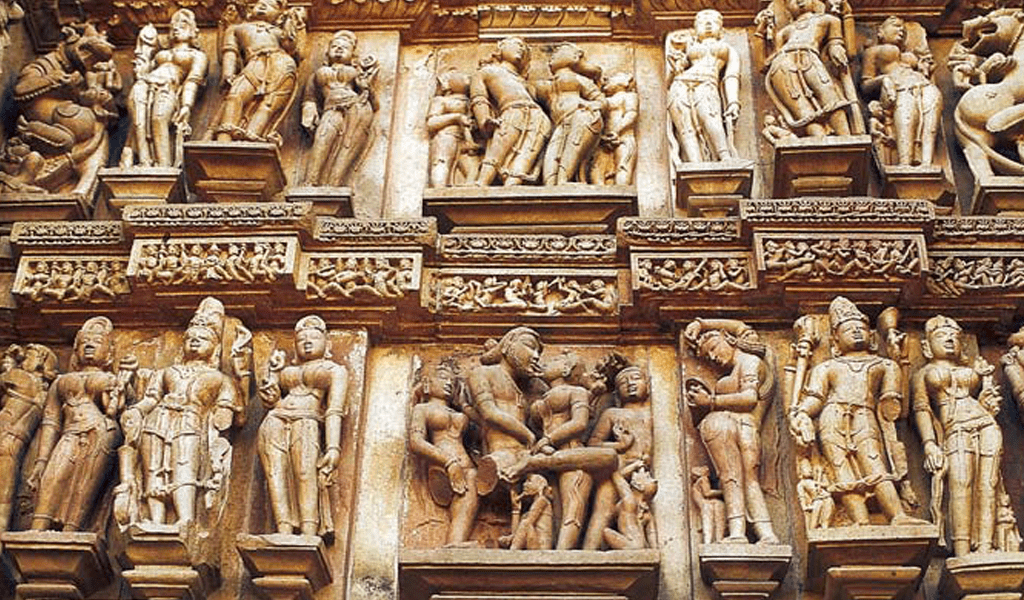
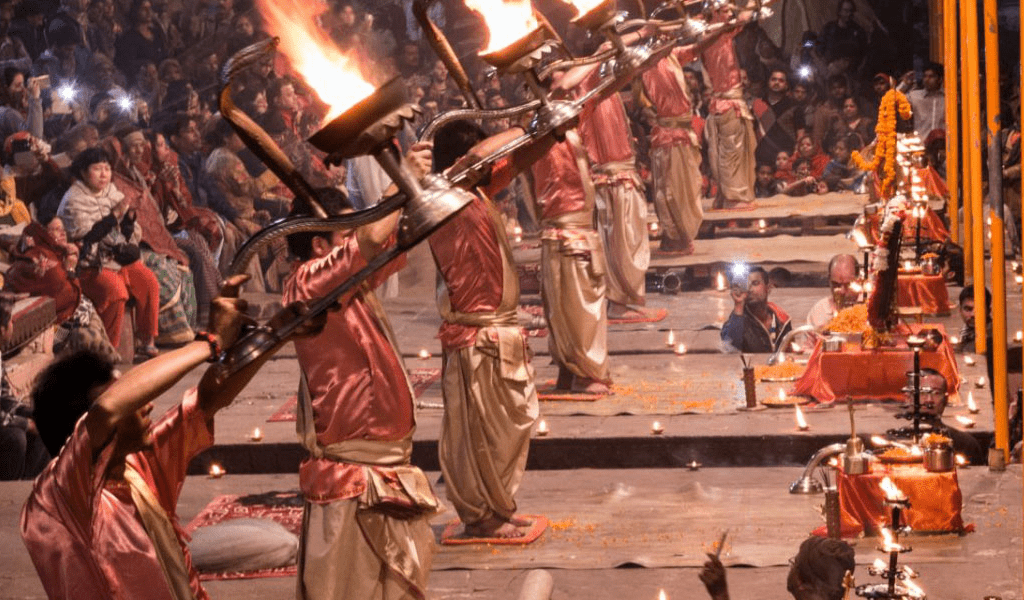
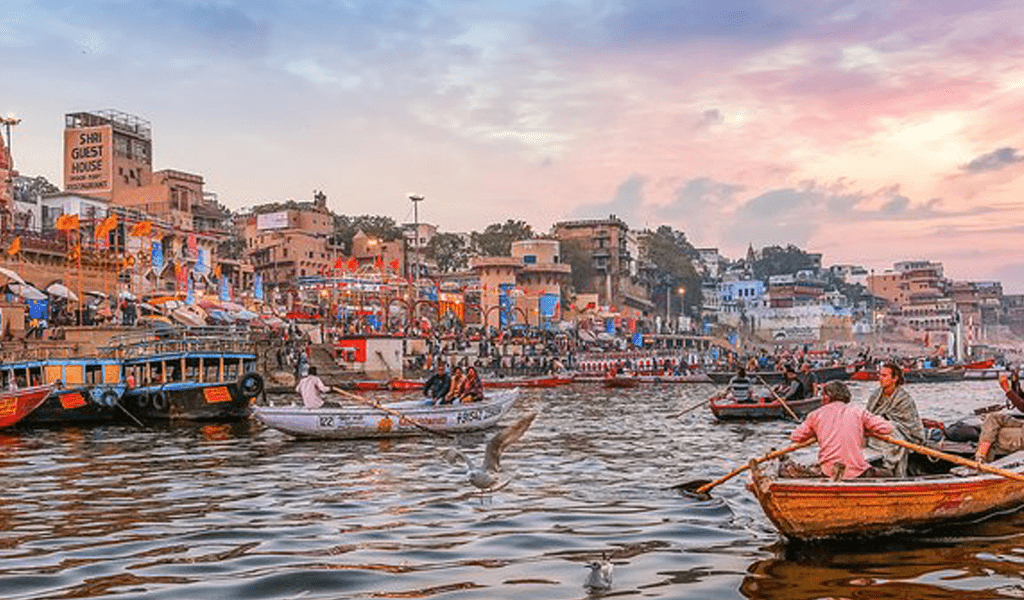
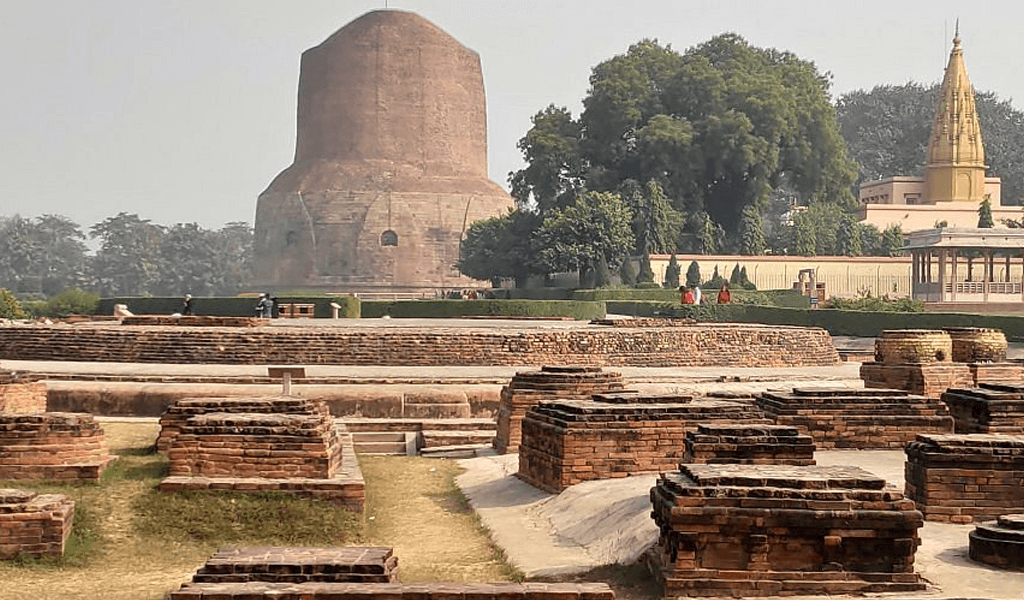
10 Nights & 11 Days
Highlights
- Meet & Assist
- Guided Sightseeing Tours
- Stay in Luxury City Hotels
- Train Journey From Agra to Jhansi
- Jama Masjid, Parliament House, Gandhi Memorial, Red Fort, India Gate, Humayun’s Tomb and Qutab Minar-Delhi
- Jeep Ride, Amer Fort, City Palace, Jantar Mantar, Albert Hall Museum-Jaipur
- Battery rickshaw ride at Taj Mahal Agra & Fatehpur sikri.
- Fatehpur Sikri, Taj Mahal & Agra Fort – Agra
- Fort Complex, Raja Mahal, Shri Ram Raja Temple, Chatarbhuj Temple – Orchha
- Eastern & Western Groups of Temples – Khajuraho
- Aarti (Religious Ceremony) on the Bank of River Ganges, Morning Boat Ride on the Ganges, Sarnath, Kashi Vishwanath & Bharat Mata Temple, Dashashwamedh Ghat & Assi Ghat-Varanasi
Delhi, Jaipur, Fatehpur Sikri, Agra, Orchha, Khajuraho, Varanasi, Delhi
You will be met & assisted on arrival and transferred to your pre-booked hotel.
Rest of the day at leisure to relax.
With old monuments and busy neighborhoods subtly merging with a vibrant and contemporary cosmopolitan world, Delhi, the capital of India, is a fascinating tourist destination. Poised along the banks of River Yamuna, Delhi, which is almost 1,000 years old, offers a mesmeric mosaic of experiences, both heritage and contemporary. While the former honour the elegant ageing of centuries-old Delhi, the latter reiterate that the capital is the heart of Indian democracy, and can keep pace with the most advanced of the metropolitans of the world.
Overnight stay at the hotel.
Post breakfast, proceed for sightseeing of Old and New Delhi. Witness attractions like Jama Masjid, Parliament House, Gandhi Memorial, Red Fort, and India Gate.
Post lunch, visit Humayun’s tomb and Qutab Minar.
At the end, enjoy a light and sound show at Red fort in the evening.
Overnight stay at the hotel.
Post breakfast, checkout and drive to Jaipur.
The city of palaces and forts, interspersed with historical monuments and gardens that testify the grandeur of the Rajput kings, Jaipur is the gateway to the royal heritage of India. Also called Pink City, it remains suspended in time, with its heritage preserved in the overwhelming Hawa Mahal that gazes down at the bustling streets of Johari Bazaar.
A little away from the city centre, which is resplendent with state-of-the-art cinemas/ movie theatres, eateries, multiplexes, museums and parks, lies the arid hilly country dotted with forts that earlier stood as armoured sentinels of Jaipur. The biggest and the most awe-inspiring is the Amber Fort, which leaves one humbled with its expansive fortifications and grandeur.
Founded by Maharaja Jai Singh II in 1727 AD, Jaipur was the stronghold of the Rajputs, who gave it its everlasting legacy in the form of various heritage sites, arts and crafts, culinary curations etc. Typical Rajasthani cuisine, comprising lal maas, dal-bati-churma, ker sangri and other uncountable recipes, all hold limelight in the culinary culture of India. These can be enjoyed in the quintessential Rajasthani style of sitting cross-legged on mats on the floor and digging in the sumptuous thali, which features up to 20 dishes.
While one can enjoy the various offerings of the city as an outsider, what really sets Jaipur apart is its welcoming spirit that wins you over with its warmth. To symbolise this hospitable culture, the older part of the city was painted pink under the reign of Maharaja Ram Singh in 1876. Although this was done during the British rule when the Prince of Wales came to visit India, many houses are still adorned with the hue to reiterate their signature slogan of ‘Padharo Mhare Desh’ (Welcome to my Land).
Jaipur was designed by architect Vidyadhar Bhattacharya in the early 18th century. Through the years it has transformed into a bustling metropolis while continuing to retain its old-world charm.
A kaleidoscope of many moods and hues, Jaipur is also a fantastic shopping destination. From colourful puppets and bandhni sarees to silver jewellery and lac bangles, it offers a host of knick-knacks and souvenirs to take home along with many fond memories.
On arrival in Jaipur, visit Amer Fort.
Amber Fort (Amer Fort), sitting atop a hill, and rising like a sentinel guarding the city. Commissioned in 1592 by Maharaja Man Singh I, the fort is a fine blend of Rajput and Mughal architectural styles, and boasts a grand palace, temples and several ornate gates. Built entirely of red sandstone with white marble work, the UNESCO World Heritage Site is a picture of opulence and grandeur, set against a stark desert backdrop and rolling hills.
One can either walk up the wide winding uphill road to reach the main gate of the fort or hire a jeep or elephant.
As you get closer to the massive gate, you realize why it was considered almost impregnable by the enemy, when the royal family used to reside here, before they shifted the capital to Jaipur. As you enter, you cross the Suraj Pol (sun gate), which leads to the main courtyard called Jaleb Chowk. Diagonally opposite is the Chand Pol (moon gate). From Jaleb Chowk, a flight of stairs leads up to the small Siladevi Temple, whose doors feature relief work in silver.
The main palace is up next. It includes the Diwan-e-Am (hall for a private audience with the king) with carved columns and latticed galleries, the king’s apartments, the gate Ganesh Pol with beautiful arches, and Jai Mandir or Sheesh Mahal. Stand at one of the many arched windows of the palace and take in the rolling shrub land stretching up to the horizon and the scenic Maota Lake at the foot of the fort. Even after centuries, it’s easy to imagine yourself as a Rajput king, who would stand here and survey his kingdom.
Sheesh Mahal or the mirrored palace is one of the most popular attractions here that draws the largest number of tourists. It is breathtaking with fine marble work and cut-glass and mirror inlaid designs on ceilings and walls. It is said that at night, as earthen lamps flickered inside the hall, the numerous mirrors reflected the light, creating the atmosphere of a start-lit sky.
Afterwards, drive to hotel for check-in.
Overnight stay at the hotel.
Post breakfast, proceed for Jaipur city sightseeing and visit Hawah Mahal, City Palace, Jantar Mantar and Albert Hall Museum.
Afternoon at leisure to relax.
Overnight stay at the hotel.
Post early breakfast, checkout and drive to Agra.
On the way, visit Fatehpur Sikri.
Mughal emperor Akbar built his capital at Fatehpur Sikri between 1572 and 1585 AD. It was constructed using red sandstone. It is said that the emperor, who wished for a son, went to Sikri to get blessed by a sufi saint, Sheikh Salim Chishti. He was soon blessed with a son and was prompted to establish his capital here, building a beautiful mosque and three palaces, one each for his three favourite wives. He named the city Fatehpur Sikri, meaning the city of victory. Not only that, but he also named his son Salim, after the saint who had blessed him.
Post sightseeing, resume journey to Agra.
On arrival in Agra, check-into the hotel.
The city of the Taj Mahal, one of the seven wonders of the world, Agra is a popular tourist destination. Steeped in history, this ancient city is dotted with monuments, architectural wonders and beautifully landscaped gardens, which are remnants of the Mughal reign’s majestic legacy. The city also enjoys a vibrant culinary scene while preserving its exquisite arts and crafts.
Agra finds a mention in the epic Mahabharata, where it is referred to as ‘Agraban’ or an integral part of the Braj Bhumi or the land of Lord Krishna. A lot of significant historical events in the city are said to have unfolded during the reign of Raja Badal Singh, a Sikarwar Rajput king, who is believed to have founded the city in 1475.
Agra transformed into a hub of art, culture, learning and commerce. The city’s lip-smacking food, awe-inspiring monuments, and arts and crafts stand as relics of this illustrious antiquity. Its rich repertoire of arts and crafts has seeped into its modern personality, too: Agra is a haven for crafts like marble and soft stone inlay work.
Overnight stay at the hotel.
Early morning, visit Taj Mahal by the “Rising Sun” – return to the hotel for breakfast.
Taj Mahal, a UNESCO World Heritage Site, is featured in almost all literature about India and is one of the most enduring images of the country. Its name is believed to have been drawn from the Persian language: ‘Taj’ means crown and ‘Mahal’ means palace, thus making this the palace of the crown. Interestingly, the queen it was built in memory of, originally named Arjumand Begum, held the name Mumtaz Mahal, which meant the crown of the palace. Although it is best known as a symbol of love, a grieving emperor’s ode to his deceased queen, another legend sees the Taj Mahal as an embodiment of Shah Jahan’s vision of kingship. The story goes that he sought to build something akin to heaven on earth, a spectacular, unbelievably beautiful monument that reinforced the power as well as the perceived divinity of the monarch as next only to the Almighty.
It is also widely believed that Emperor Shah Jahan invited artisans from Italy and Persia to work on this marble monument. A fascinating aspect of this structure is that it looks the same from all four sides, except the one that faces the River Yamuna. This side is said to have been especially embellished to serve as the main entrance for the emperor. Shah Jahan would approach the Taj Mahal from the river, aboard a barge, while the entrance used by tourists today served, at the time, as an entryway for soldiers and common people. There are intricate inscriptions on all four entrances, while marble carvings and pietra dura mosaics adorn the walls. Lapis-lazuli, cornelian, mother-of-pearl, agate and emerald are some of the precious gems and stones that were once used in its design. It is said that work on its construction began in 1631. Legend has it that it took 20 years to complete this architectural marvel.
It is also riddled with optical illusions and masterful architectural safeguards. As one first beholds the monument from the main gate, for instance, the Taj Mahal looks large and imposing, but as you move closer, it appears to shrink in size. Also, the minarets surrounding the edifice, while perfectly upright to the naked eye, have actually been constructed to lean away from it so that, should a disaster like an earthquake come about, they would fall away from and not on the mausoleum.
Post breakfast, proceed to visit Agra Fort.
Built by Mughal emperor Akbar in 1565 AD, Agra Fort is a majestic sandstone built as an ode to the magnificence of the Mughal Empire. Encompassing within its 2.5-km-long enclosure walls a stunning imperial city, the fortress is shaped like a crescent, its eastern wall flanked by the River Yamuna. It is said that the construction of the fort was originally begun by Emperor Akbar, but completed by his grandson Shah Jahan, who added most of the marble monuments here. There were originally four gates for entrance, two of which were walled up, and only one is open today – the Amar Singh gate.
Agra Fort is widely considered to be a masterpiece of planning, design and construction. Some of its other internal structures include the stunning Moti Masjid, Diwan-i-Khas (hall of private audience) and Diwan-i-Aam (hall of public audience), once home to the legendary Peacock Throne that was eventually taken to Red Fort in Delhi when Shah Jahan shifted his capital there. There are two prominent mosques inside the fort – Nagina Masjid was built by Shah Jahan as a private mosque for the ladies of the court and Mina Masjid is believed to have been built by him solely for his own use.
Afternoon at leisure to explore the market.
Overnight stay at the hotel.
Post breakfast, checkout and transfer to Agra Railway Station for Shatabdi train to Jhansi departing at 0800hrs.
Arrival Jhansi at 1045Hrs.
Meet & assist on arrival at Jhansi Railway Station and transfer to Orchha by car.
Orchha a small, pastoral town is popularly known as Raja Ram’s kingdom, maybe the only place in the country where Lord Rama is revered as a beloved king and not just a god. Boasting an amazing blend of Mughal and Rajput architecture dating back to the 16th century, Orchha was at the heart of many prominent royal dynasties for nearly 300 years. This history lives on in the splendid monuments that punctuate the quaint town, shrouded in mystery and sitting by the softly flowing Betwa river. Add to this the sweet smell of custard apples permeating the air, and you may start to unravel the mesmeric charm of this “hidden place” (the meaning of Orchha).
At the heart of Orchha’s heritage is the Orchha Fort complex. Situated on an island in the Betwa, this complex is a maze of palaces, forts and temples. Divided into three parts: Raj Mahal, Jahangir Mahal and Sheesh Mahal, the fort hides within it secret passages, exquisite murals and resplendent residential quarters of kings and queens.
Orchha was established as the capital of the powerful Bundelkhand empire by king Rudra Pratap Singh in 1501 AD and then ruled by several kings.
On arrival, check-into the hotel.
Later in afternoon sightseeing tour of Orchha and visit the Raja Mahal, Shri Ram Raja Temple, Chatarbhuj Temple decorated with painted murals which represents the finest flowering of the Bundela school of painting.
Overnight stay at the hotel.
Post breakfast, checkout and drive to Khajuraho.
If stones could speak, the Khajuraho temples would create melodies. Cradled by the Vindhya mountain range, the heritage town of Khajuraho is famed for being home to the UNESCO World Heritage Site listed temple complex that features Hindu and Jain houses of worship. These temples are famous for their stunning intricate sculptures depicting different aspects of life: spirituality, love, friendship, sports, royalty and most significantly, awe-inspiring art. Based on their geographical location, the temples are categorized into three groups: Eastern, Western and Southern. Believed to have been built in a relatively short period of time spanning over 100 years, i.e., between 950-1050 AD, the complex boasts 22 temple structures that remain from the initial group of 85. Forgotten for centuries, they were rediscovered in the 1850s and restored.
The temples were conceived and built under the rule of the Chandela dynasty. The ornate craftsmanship transforms the life-like sculptures on the temple walls into works of art and is an ode to life, love and joy.
There is an interesting story about how the town got its name. It is said that as the Chandela rulers began constructing the temples, they got the entire area enclosed by a wall. The wall had eight gates flanked on either side by khajur or date palm trees, which are found in abundance in this region. The temples were, thus, called khajura vatika, or bearing khajura.
On arrival in Khajuraho, check-into the hotel.
Overnight stay at the hotel.
Post breakfast, check out and proceed for the Khajuraho sightseeing tour.
Explore the Eastern and Western groups of temples and witness the architectural beauty. Visit Laxmi & Varaha temples, Kandariya Mahadev temple, and Devi Jagdambi temple.
Post sightseeing, transfer to Khajuraho airport for flight to Varanasi.
One of the oldest living inhabitation of the world, the sacred city of Varanasi, nestled on the banks of the holy Ganges River, has been attracting pilgrims for centuries. Celebrated author Mark Twain, who visited India in the last decade of the 19th century, described the city as “older than history, older than tradition, older even than legend.”
Believed to be the abode of Lord Shiva, Varanasi is among the seven sacred cities in the country. Centuries of history, art and tradition have conflated to add colourful layers to Varanasi’s aura, which is most spectacularly evident at its ghats (stepped banks of a river). An abode of travellers in search of holiness and divine providence, the ghats of the Ganges are the highlight of the spiritual scene of Varanasi. From the famous Ganga arti (a fire ritual) to cremation ceremonies, the ghats are the site of time-honoured rituals that are performed to this day.
Legend has it that Lord Shiva channelled the celestial Ganga on earth, and that is why the river is considered holy. Thousands of devotees from all over the country come to bathe in its waters, as it is believed that taking a dip in the holy Ganges absolves one of their sins. It is also believed that those cremated here achieve moksha (salvation). For many, the sacred Kashi Yatra (pilgrimage to Kashi, as Varanasi was earlier called) is one of the most important rituals to undertake during their lifetime.
In recent years, the city has turned into a purveyor of philosophy, yoga, the ancient medicinal science of Ayurveda, and astrology.
Varanasi is also one of the holiest sites of Buddhism, as it was in Sarnath, which is located merely 12 km away, that Lord Buddha preached his first sermon. Jain literature, too, refers to Kashi as a holy city, as it is the birthplace of four Jain tirthankaras (saints). It is said that Kabir, a 15th-century mystic poet and saint, was also born in this city.
The city, believed to date back to 1400 BC, finds mention in the Upanishads (holy Hindu scriptures) as Benaras and is said to have been an important centre of trade and education. It eventually acquired the name Varanasi and came to occupy a special place in the Indian consciousness, especially as a bridge to the old world.
Meet & assist on arrival at Varanasi Airport and transfer to the hotel.
Later in the evening explore Ghats of Varanasi, sacred temples and the local market.
Witness evening Aarti (Religious Ceremony) on the bank of the River Ganga.
Overnight stay at the hotel.
Start the day with a boat ride on the sacred Ganga River.
Post breakfast, drive to Sarnath (12 km away). It is where Lord Buddha delivered his first sermon after attaining enlightenment.
On arrival in Sarnath, explore the attractions like Dhamek Stupa, Sarnath Museum, and Chaukhandi Stupa.
Visit the sacred shrine of Kashi – Vishwanath and Bharat Mata Mandir and visit Dashashwamedh Ghat & Assi Ghat.
Return to the hotel in the afternoon.
Evening at leisure to relax.
Overnight stay at the hotel.
Later in afternoon, checkout and transfer to Airport for flight to New Delhi.
Meet & assist on arrival in Delhi and transfer to International Airport for flight to onward destination.
Golden Triangle with Orchha, Khajuraho & Varanasi
- Starting from Euro 1242 per person for 10 Nights & 11 Days based on best rating 3 Star hotels for two paying pax.
- Starting from Euro 1330 per person for 10 Nights & 11 Days based on best rating 4 Star hotels for two paying pax.
NOTE :
- Above rates valid from 01 Oct 2024 to 31 March 2025
- Prices given above not valid during festive season (Dussehra / Diwali / Christmas / New Year) Long Weekends & blackout dates.
Inclusions
- Taj Mahal visit at sunrise.
- Jeep Ride at Amber fort in Jaipur.
- Assisted arrival & departure transfers.
- Mineral water bottle available in the car.
- Monument entry charges as per the itinerary.
- Train Journey from Agra to Jhansi in AC Chair Car.
- Morning exclusive boat ride on River Ganges in Varanasi.
- Toll tax, Parking, driver expenses and all other applicable taxes.
- Batter Rickshaw ride at Fatehpur-sikri, Taj Mahal-Agra & Varanasi.
- 10 Nights’ Accommodation on Twin/Double sharing with daily buffet breakfast in 3 / 4 Star category hotels.
- English speaking guide for all sightseeing tours in Delhi, Jaipur, Agra, Orchha, Khajuraho & Varanasi as per the program.
- Exclusive Air Condition private car for airport transfers, sightseeing, and excursions as per the program, with well experience, professional driver.
Domestic Flight Supplement
- Khajuraho – Varanasi between 40 to 100 Euro per ticket including taxes.
- Varanasi - Delhi between 40 to 100 Euro per ticket including taxes.
Exclusions
- Visa
- Travel & health insurance.
- Any Domestic / International flight fare.
- Any extra meal not mentioned in the inclusions.
- Camera fees in Monuments and parks where applicable.
- Anything that not specifically mentioned in above inclusions.
- Festive season (Dussehra / Diwali / Christmas / New Year) Long Weekends & blackout date supplements.
- Any increase in fuel price, government and state taxes shall be charged extra at the time of confirmation.
- Personal nature Expenses i.e. Telephone Calls, Laundry, Soft / Hard Drinks, Meals, Tipping, Portage & items of personal nature etc.
- Any expenses for unfortunate circumstances like cancellation/flight delay/hike in fare or for any other similar reason or for natural calamities.
Payment Policy
- 30% of the Invoice value at the time of Reservation (Soon after you receive the confirmation mail and invoice).
- 70% of the Invoice value 60 days before arrival.
Cancellation policy
- Hotels cancellation as per hotels policies.
- Flight cancellation and refunds as per airlines policies.
- Cancellation request on telephone will not be accepted.
- Only written request for cancellation by official email will be accepted.
- Cancellation received 60 days before check-in date: 10% of invoice amount (banking fee + administration fee).
- Cancellation received 59-45 days before check-in date: 25% of invoice amount (banking fee + administration fee).
- Cancellation received 44-30 days before check-in date: 40% of invoice amount (banking fee + administration fee).
- Cancellation received 29-15 days before check-in date: or No Show: No Refund.
